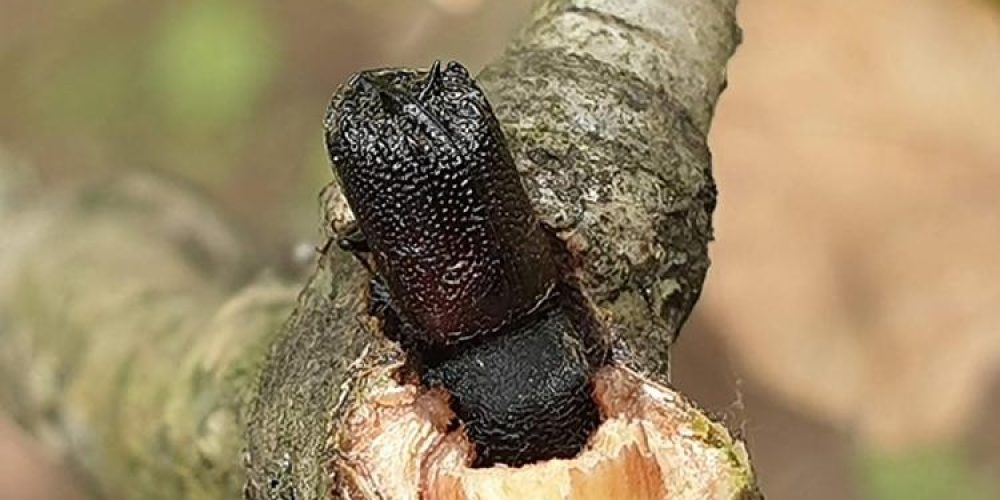Table of contents of the article
ToggleThe toothed wood borer is a pest that affects the health of trees and timber. In this article on your website, World of Plants, we discuss its effects and ways to prevent them.
Symptoms of toothed wood borers
- the family : oleoptera
- Scientific name : Sinoxylon perforans
- Holes of different sizes in the tree trunk
- What distinguishes this infestation from the bark weevil is that the drilling continues into the wood, where tunnels filled with sawdust are dug into it, and weakness appears in the tree.
- Dryness of tough branches
- Wood sawdust coming out of the feeding holes.
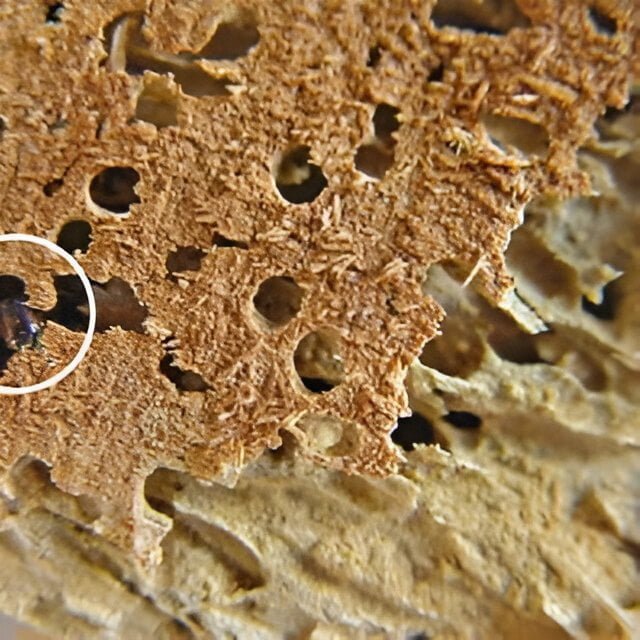
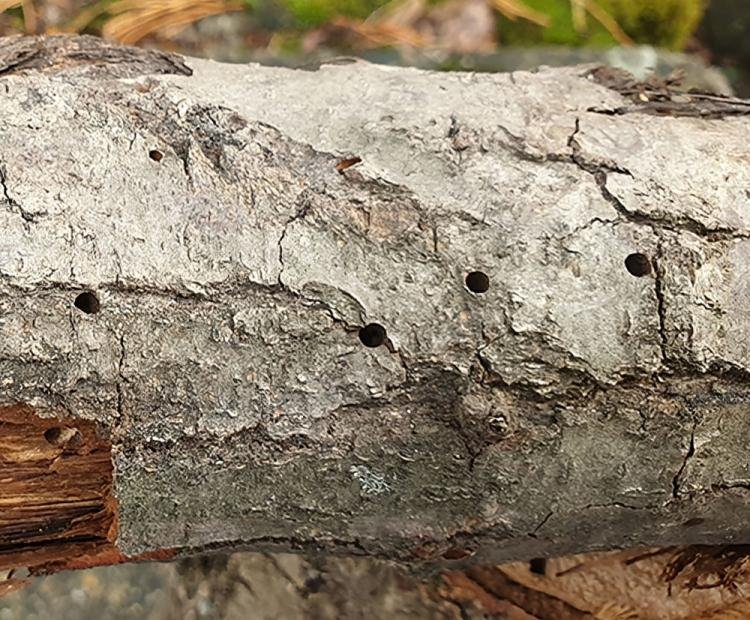
Shape of a toothed wood boring insect
Its body length ranges from 5 to 8 mm and has a cylindrical shape. The color of the head and chest is black and the color of the sheaths is brown. There are serrated protrusions on the chest. The larva is a curved worm, and on the chest there are three pairs of short legs. The pupa of the free type is found near the exit hole.
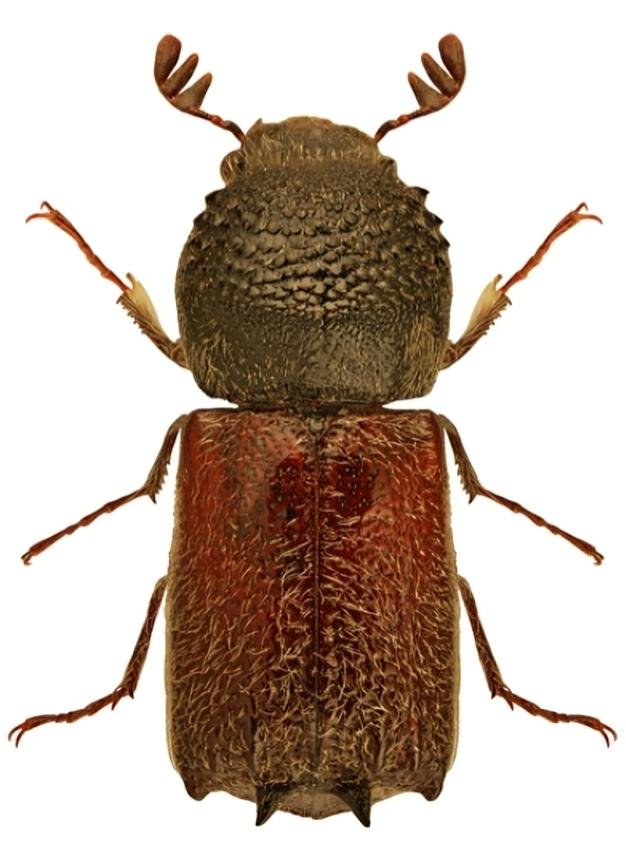
Causes of serrated wood borers
- Neglecting pruning, mineral fertilization and regular irrigation weakens the tree against various pests and attracts these insects.
- It infects weak trees.
Suitable conditions for the propagation of toothed wood borers
- High temperature because this insect loves heat
Development cycle of toothed wood borers
- The female lays 20 to 30 eggs on tree branches or trunks. Then the larvae develop in the wood.
- Adults feed in winter and spring on twigs
- Adults are present in the field in May and June and puncture young shoots. Females lay 20-30 eggs each... The larvae make individual tunnels and pupate in July, giving rise to adults that overwinter 8-10 days later. Larval feeding caused cracking of the bark and wilting of the buds, which in the early stages resembles symptoms of disease or physiological deficiency. The wilted buds remaining on the plant were an abundant source of beetles to re-infest the following year
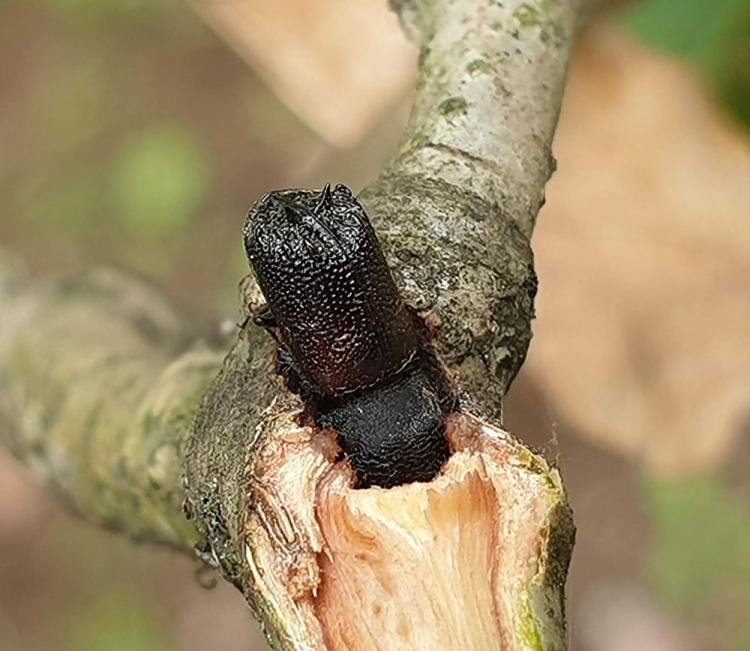
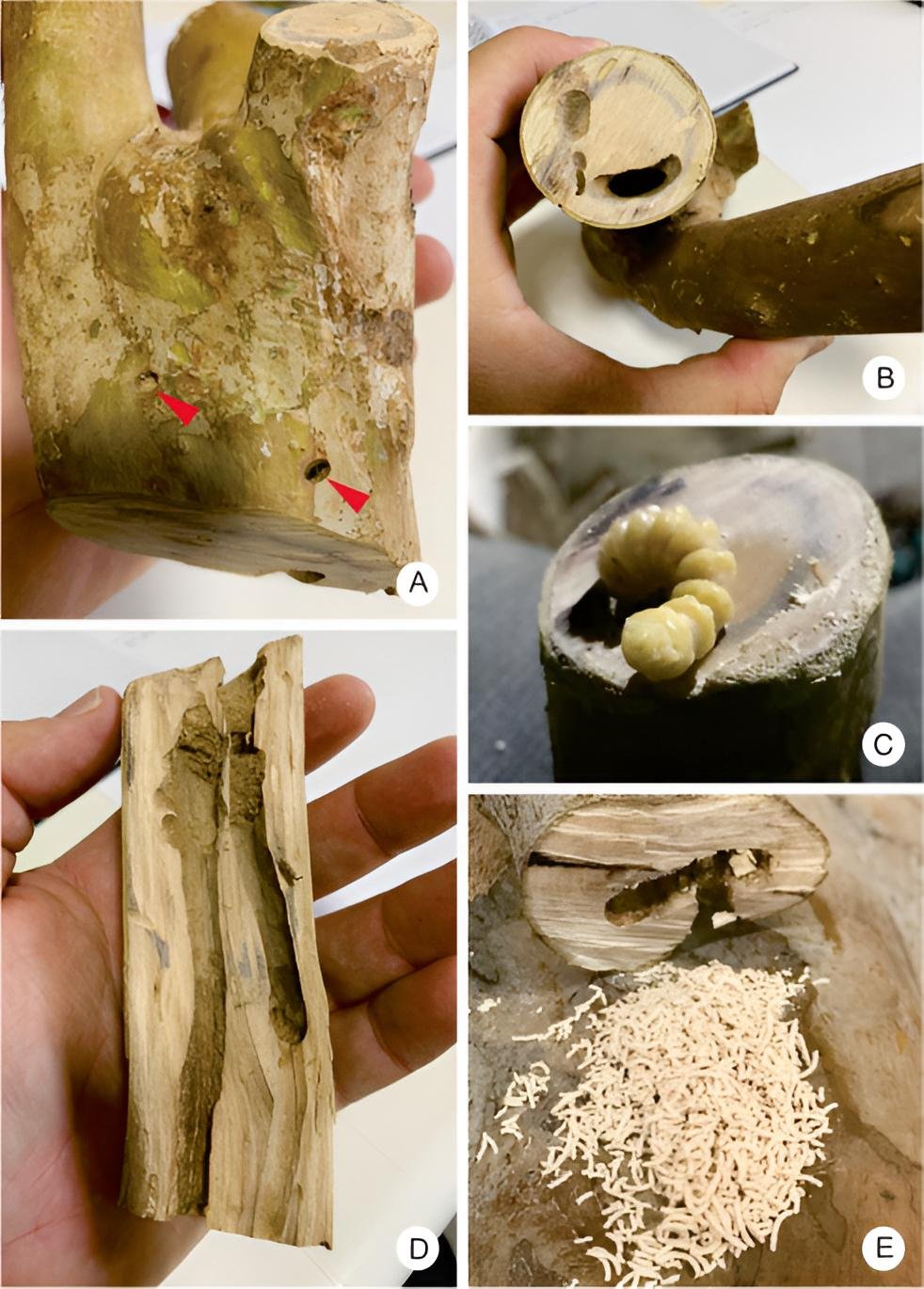
Diffusion losses of serrated wood borers
- Sudden death of trees.
- The economic threshold for increasing the risk and infection of this pest is estimated at approximately 40% of agricultural production.
Control strategy
Preventive measures to prevent the occurrence of toothed wood borers
- Remove any infected shoots or bark during pruning and burn them.
- Regular irrigation and tillage of the soil
- Do not plant vegetables next to trees.
Chemical and organic control recommendations against toothed wood borers
- Soil treatment with 1-1.5% Dibutox 25 CE.
- Painting trees with lime mixed with paradichlorobenzene at a ratio of 6:1
- Spraying trees at the time the adult insects appear with contact pesticides.
In conclusion, we would like to note that we, at the world of plants website, offer you all the necessary services in the world of plants, we provide all farmers and those interested in plants with three main services::-
- Artificial intelligence consulting service to help you identify diseases that affect plants and how to deal with them.
- Blog about plants, plant diseases and care of various crops ... You are currently browsing one of her articles right now.
- An application that provides agricultural consultations to clients, as well as a service for imaging diseases and knowing their treatment for free – Click to download the Android version from Google Play Store، Click to download the IOS version from the Apple App Store.
references:-
- Masood, Asad, Shafqat Saeed, and Asif Sajjad. “Characterization and damage patterns of different bark beetle species associated with mango sudden death syndrome in Punjab, Pakistan.” Pakistan Entomologist 30.2 (2008): 163-168.
- Taralashvili, L.V. 1986: Sinoxylon perforans Schrnk sur la vigne – Sinoxylon perforans Schrnk on vine Zasita Rastenij (9): 36-37
- Sinoxylon perforans – forestpests
- The vine borer (Sinoxylon perforans Schrank) – a new pest of grapevine plantations in Dobrudja – eurekamag




